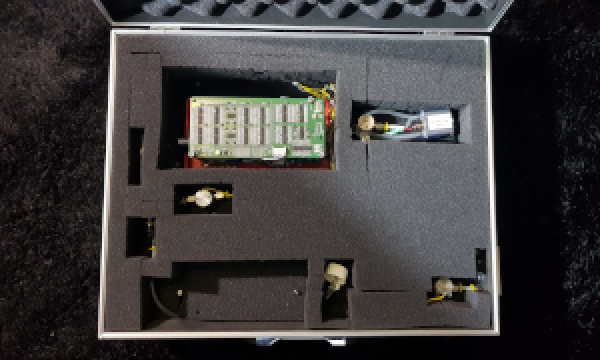Recognizing different smells and quickly detecting odors can be the key in several areas, from the identification of explosives, detection of spoiled fish or even infectious microorganisms. In order to do that, an electronic nose has been developed by a group of researchers from the NOVA University of Lisbon (NOVA). It is an innovative technology that uses sustainable material: vegetable polyester.
The research, now published in the journal Materials Today Bio, is led by two scientists who won a scholarship from the European Research Council (ERC): Cecília Roque, from the Applied Biomolecular Sciences Unit at NOVA School of Science and Technology (UCIBIO-FCT NOVA), and Cristina Silva Pereira, from the Instituto de Tecnologia Química e Biológica António Xavier (ITQB NOVA).
The artificial smell aims to detect gases by recognizing volatile organic compounds (VOCs) present in odors. When we smell, volatile compounds bind to olfactory proteins that we have in the nose, which triggers electrical signals that are sent to the brain. In the electronic nose, chemical sensors are used to mimic that response. Artificial intelligence methods are then used. It was possible to develop a pellicle that can respond to various odors through the combination of a vegetable polyester present in a well-known material, such as cork, and liquid crystals, such as those found on mobile phone LCDs.
At the base of this new olfactory sensor is suberin, one of the most abundant polyesters in nature, present in the cell wall of plants, for example in cork, potato skins or tomato skin. The research group led by Cristina Silva Pereira clarified the 3D structure and discovered determinant characteristics of this green polymer, such as its ability to have antibacterial action. “This molecule has particularities that make it unique and versatile in the development of alternative materials, for example the synthesis of bioplastics. Its use in olfactory sensors was possible due to the collaboration with the Cecília Roque group”, explains Cristina Silva Pereira.
This understanding enabled new uses for suberin, such as the application on an electronic nose. Conventional versions of these sensors use pollutants such as metallic materials and synthetic polymers. However, researcher Cecília Roque and her research team have introduced a new concept by developing gas sensors based on materials of biological origin, such as gelatin, in combination with liquid crystals. This team also developed a prototype of an electronic nose that collects and processes, through artificial intelligence algorithms, the signals obtained when the new materials come into contact with volatile compounds. “Our goal is to design smart functional materials, which are also sustainable. It was, therefore, with great enthusiasm that we saw the partnership with the Cristina Silva Pereira group and that together we idealized the use of cork as a new source of gas sensors”, says Cecília Roque.
The new electronic noses pave the way for a new generation of environmentally friendly and low-cost chemical detection materials, which could be a promising alternative in the near future.
Original article:
Rúben Rodrigues, Susana I. C. J. Palma, Vanessa G. Correia, Inês Padrão, Joana Pais, Marta Banza, Cláudia Alves, Jonas Deuermeier, Celso Martins, Henrique M. A. Costa, Efthymia Ramou, Cristina Silva Pereira, Ana Cecília A. Roque
Sustainable plant polyesters as substrates for optical gas sensors
Materials Today Bio, DOI: https://doi.org/10.1016/j.mtbio.2020.100083.
Source: ITQB NOVA

